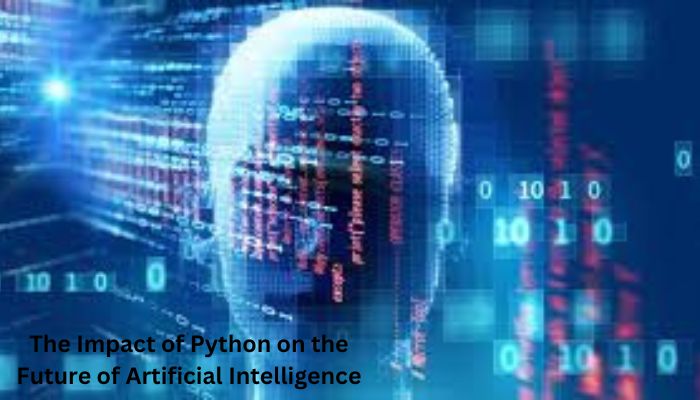Python is a popular programming language for AI, ML, and data analytics applications due to its robustness, scalability, and readability. Its top-notch libraries, tools, and frameworks are ideal for ML and AI-driven applications. Python’s simplicity and versatility boost programmers’ confidence and productivity when utilizing these technologies, making it a preferred choice for businesses hiring Python programmers for application development.
What is Python?
Python is a high-level programming language with an emphasis on built-in data structures and readable code. Its dynamic typing and binding make it ideal for Rapid Application Development. Python’s simple syntax reduces maintenance costs, and its modules and packages promote modularity and code reuse. Its increased productivity makes it a popular choice among developers. Python’s no compilation step makes debugging easy and fast.
Why Python Is So Popular?
Python’s Role in Rapid Development
- Facilitates easy comprehension and understanding of application development.
- Enables easy comprehension, modification, copying, or pasting of peer code.
- Avoids ambiguities, mistakes, or inconsistencies in paradigms, facilitating sharing algorithms, tools, and ideas.
- Offers optimization capabilities, including testing, debugging, and tab completion.
- Features a broad and active developer community, providing 24/7 assistance for bug fixes in AI, ML, and data analytics application development.
- Provides numerous libraries with visualization tools, aiding in understanding, presenting, and visualizing data.
What Makes Machine Learning and Artificial Intelligence Important Technologies?
Artificial Intelligence and Machine Learning are rapidly evolving technologies that analyze large and complex data, providing precise predictions and insights that boost business productivity. Organizations across industries are increasingly applying these technologies to improve performance. According to Deloitte, the number of companies using AI and ML for increased efficiency and business growth is expected to increase within two years, making them the technologies of the future.

Why do AI and data analytics use Python so much?
Quick development and comprehensibility
Python is a powerful tool for quick development, allowing programmers and project managers to understand the application’s operations efficiently. It eliminates ambiguities, errors, and paradigm conflicts, promoting sharing algorithms, resources, and concepts among AI, ML, and data analysis experts. Python code optimization is also a simple process, and tools like IPython offer additional features like testing, debugging, and tab completion, making Python a valuable tool for businesses.
AI, ML, and Data Analytics Libraries
Python’s AI/ML & Data Analytics Libraries
- Scikit-learn: Handles basic ML methods like clustering, regression, and classification.
- Pandas: A computer language for organizing and performing complex data analysis.
- NumPy: A Python multi-dimensional array object package for data science calculations.
- Matplotlib: A library for plotting data with data exploration and visualization features.
- TensorFlow: Allows for creating, training, and using artificial neural networks with large data amounts.
Flexibility
Python is a versatile programming language that allows developers to use scripting or object-oriented programming (OOP) to achieve desired results. It can be used alongside other languages, reducing errors and the need for source code recompilation. Python also offers creative freedom in app development, with uncomplicated frameworks like Keras for training machine learning models. Its adaptability allows for continuous model monitoring and management through MLOps systems.
Less Coding
The rapid development of artificial intelligence necessitates developers using numerous algorithms in their applications. Python, used for AI and ML development, offers pre-defined packages that eliminate the need to code algorithms. Its ‘check your code’ feature simplifies the development process, freeing developers from the responsibility of testing code.
Why is Python useful for AI and Data Analytics?
Python, a widely used object-oriented, general-purpose, interpreted high-level language, has recently gained popularity. In 2020, it surpassed JavaScript, HTML/CSS, and SQL as the fourth most popular language. Known for its object-oriented nature, Python is used for creating APIs, AI, websites, and the Internet of Things.
Python’s popularity is attributed to its extensive use by data scientists, outstanding libraries, ease of learning, and suitability for all data analysis phases. Its readability and fast performance, coupled with attractive packages like Matplotlib, make it an ideal choice for data analytics and AI in businesses. Its open-source nature, high speed, and seamless assistance have made it a highly sought-after programming language among many.
Conclusion
Python is a powerful tool for AI and ML development. It offers rapid prototyping, diverse standard libraries, performant numerical libraries, open-source machine learning libraries, and multi-paradigm solutions for real-life problems in various industries.
